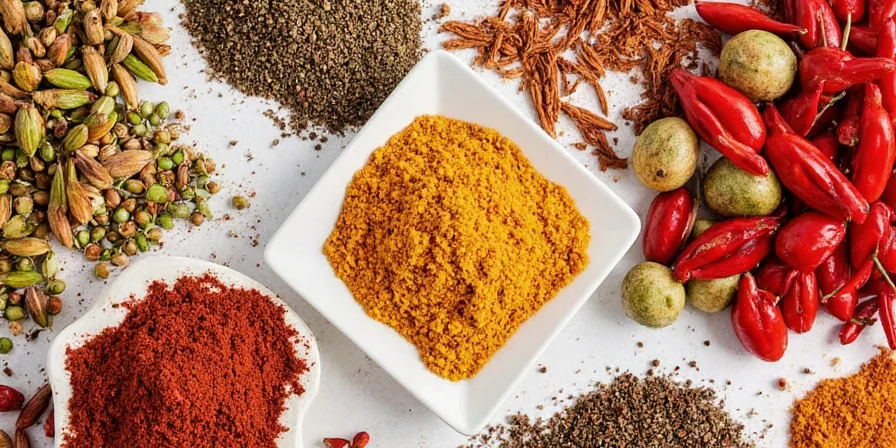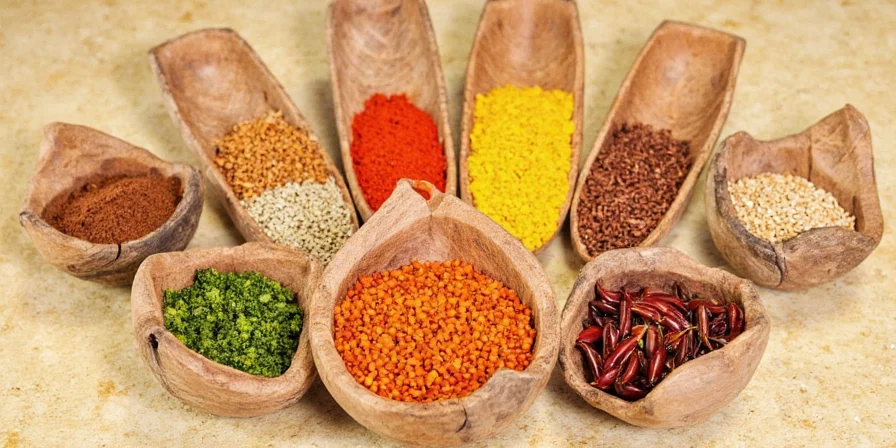Where Did the Spices Come From? A Global Journey Through Flavor and History
If you've ever sprinkled cinnamon on your oatmeal or reached for a jar of cumin while making curry, you've unknowingly participated in a millennia-old global spice trade. But where did the spices come from, really? In this blog post, we’ll take you on a flavorful journey through time and across continents to explore the origins of popular spices, the cultures that embraced them, and how they traveled the world.
Table of Contents
- Ancient Roots: How Spices Got Their Start
- Asia: The Spice Islands and Beyond
- The Middle East: Crossroads of Spice Culture
- Europe: Colonialism and the Spice Race
- The Americas: New World Flavors
- Africa: Hidden Gems of the Spice World
- Practical Tips: Using Regional Spices Like a Pro
- Conclusion: Spices – More Than Just Flavor
🌍 Ancient Roots: How Spices Got Their Start
Long before supermarkets and online spice merchants, early humans discovered the power of flavor through trial and error. Archaeological evidence suggests that as far back as 5000 BCE, people were already using mustard seeds and turmeric in cooking. But why did spices become so important?
- Preservation: Before refrigeration, spices like pepper and clove helped mask spoilage and preserve meats.
- Mysticism: Many ancient civilizations believed spices had divine powers—cinnamon was used in Egyptian embalming rituals!
- Currency: Some spices were more valuable than gold; nutmeg was once traded ounce-for-ounce with silver in Europe.
🌏 Asia: The Spice Islands and Beyond
Asia is home to some of the most iconic spices in the world. The region known as the 'Spice Islands' (modern-day Indonesia) became legendary for its rare and coveted flavors.
Key Asian Spices & Their Origins
| Spice | Origin | Historical Use |
|---|---|---|
| Cinnamon | Sri Lanka | Roman embalming, Indian medicinal practices |
| Nutmeg & Mace | Banda Islands, Indonesia | Used as aphrodisiacs and medicine in medieval Europe |
| Turmeric | South India | Hindu rituals, Ayurvedic medicine, coloring fabrics |
| Ginger | China and Southeast Asia | Digestive aid, culinary staple in many Asian dishes |

🐪 The Middle East: Crossroads of Spice Culture
The Middle East has always been a melting pot of cultures, and its spice traditions reflect this rich history. As traders moved goods between Asia, Africa, and Europe, they brought exotic flavors along with them.
- Za’atar: A blend of thyme, sumac, sesame seeds, and salt, used widely in Levantine cuisine.
- Cumin: Originally from the eastern Mediterranean, it became a cornerstone of Persian and Arabic cooking.
- Saffron: The “Red Gold” from Persia, still one of the most expensive spices today due to labor-intensive harvesting.
🏰 Europe: Colonialism and the Spice Race
European demand for spices sparked one of the most transformative eras in global history. By the 15th century, explorers like Vasco da Gama and Christopher Columbus were driven by the promise of spice wealth.
How European Exploration Changed the Spice Map
| Spice | Original Source | New Sources After Colonization |
|---|---|---|
| Black Pepper | India | Also grown in Brazil and Caribbean colonies |
| Cloves | Maluku (Indonesia) | Planted in Zanzibar and Madagascar by the Dutch |
| Nutmeg | Indonesia | Later cultivated in Grenada and other Caribbean islands |
🌶️ The Americas: New World Flavors
When Europeans arrived in the Americas, they encountered spices they had never seen before—especially chili peppers, vanilla, and allspice.
- Chili Peppers: Native to Central and South America, now integral to cuisines worldwide—from Korean gochujang to Thai bird’s eye chilies.
- Vanilla: First cultivated by the Totonac people in Mexico, it remains one of the few orchids used for flavoring food.
- Allspice: Discovered in Jamaica by Spanish explorers, who called it “pimienta gorda” (fat pepper), thinking it was a new kind of pepper.
🐘 Africa: Hidden Gems of the Spice World
Africa may not be the first continent that comes to mind when thinking about spices, but its influence is profound. From North African ras el hanout to West African grains of paradise, African spices have long enriched global palates.
- Grains of Paradise: A peppery seed from West Africa, once used as a substitute for black pepper during the Middle Ages.
- Cardamom: While native to India, Ethiopia and Tanzania are now major producers in East Africa.
- Berbere: A complex Ethiopian spice blend featuring chili, garlic, ginger, and fenugreek.
💡 Practical Tips: Using Regional Spices Like a Pro
Ready to bring these flavors into your kitchen? Here are some easy tips to use regional spices effectively and authentically:
- Toasting Spices: Dry-roast whole spices in a pan before grinding them to unlock deeper flavor. Works especially well with cumin, coriander, and mustard seeds.
- Pair Smartly: Match spices with complementary oils and heat sources. For example, saffron shines in rice dishes, while smoked paprika loves grilled vegetables.
- Don’t Overdo It: Spices are powerful! Start with small amounts and adjust to taste.
- Storage Matters: Whole spices last longer than ground ones. Keep them in airtight containers away from light and moisture.
- Experiment Locally: Try recreating regional spice blends like garam masala (India), dukkah (Egypt), or za’atar (Middle East) at home.
🔚 Conclusion: Spices – More Than Just Flavor
So, where did the spices come from? From the misty jungles of India to the volcanic soils of Indonesia, from the bustling bazaars of Cairo to the tropical plantations of the Caribbean—the story of spices is one of adventure, trade, culture, and community.
Whether you’re spicing up your dinner table or exploring the stories behind each pinch, remember: every grain of spice carries centuries of human history within its aroma. And now, thanks to globalization, we can experience those stories without ever leaving our kitchens.
Happy seasoning!











 浙公网安备
33010002000092号
浙公网安备
33010002000092号 浙B2-20120091-4
浙B2-20120091-4